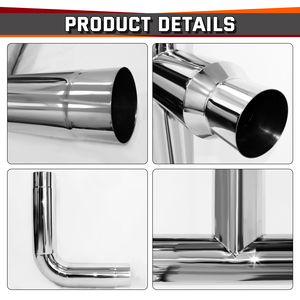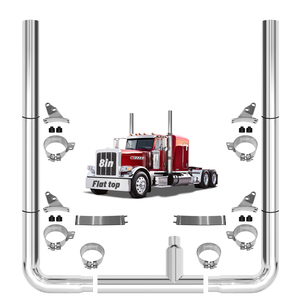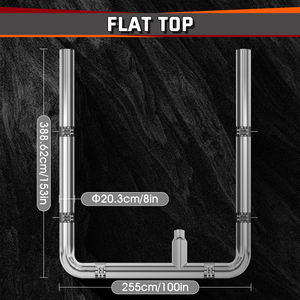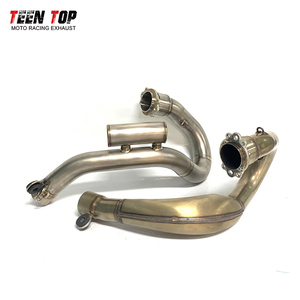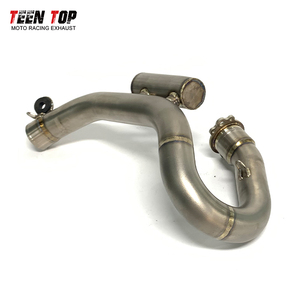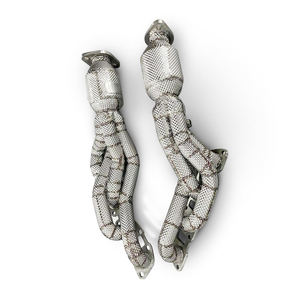Types of Gas Headers
Gas headers are integral components of gas distribution systems, collecting gas from various pipelines and distributing it to multiple service lines. They enhance reliability and safety by minimizing pressure drops and providing backup supply during maintenance or emergencies.
Key Benefit: Gas headers optimize flow dynamics, ensuring consistent gas delivery while reducing system complexity and maintenance requirements.
Natural Gas (NGK) Headers
These headers collect natural gas from different pipelines and distribute it to various service lines for residential and commercial use. They significantly improve distribution reliability while reducing pressure fluctuations.
Best for: Residential gas networks, commercial buildings, and industrial facilities
PC Cooling Headers
Specialized for phase change cooling systems in computers, these headers manage and distribute refrigerant gas through cooling components. They optimize cooling efficiency while allowing for effective system maintenance.
Best for: High-performance computing, overclocked systems, and precision cooling applications
LPG Headers
Designed for liquefied petroleum gas systems, these headers manage the flow and pressure of LPG from storage tanks to service lines. Their specialized design ensures safe and efficient LPG distribution.
Best for: Rural gas networks, portable gas systems, and commercial cooking installations
Biogas Headers
These collect and distribute biogas produced through anaerobic digestion from various digesters to processing pipelines. They manage biogas quality and quantity for reliable distribution in renewable energy systems.
Best for: Agricultural operations, waste management facilities, and renewable energy production
Gas Header Type Usage by Industry
Specifications and Maintenance
Gas headers come in various specifications to suit different applications. Understanding these technical aspects is crucial for selecting the right header for your specific requirements.
| Specification | Description | Importance |
|---|---|---|
| Material | Stainless steel, carbon steel, or alloy steel, each offering different corrosion resistance and durability profiles | Critical for longevity and safety |
| Size | Determined by pipe diameter and length, varies based on flow requirements | Affects flow capacity and efficiency |
| Port Configuration | Number and arrangement of outlets/flanges determining connection patterns | Impacts gas flow characteristics |
| Tube Configuration | Single-size tubes or dual-size designs (tri-Y or dual-tube) | Influences performance and flow dynamics |
| Coating/Finishes | Ceramic coating, chrome plating, or heat-resistant paints | Provides corrosion protection and thermal management |
| Heat Management | Heat shields, thermal barriers, and other components | Reduces heat transfer and improves efficiency |
Essential Maintenance Practices
Proper maintenance of gas headers ensures optimal performance, safety, and longevity. Implement these key maintenance practices:
Regular Inspections
Conduct thorough inspections for wear, damage, rust, or leakage. Check for cracks, holes, and corrosion on pipes and fittings. Immediately address any gas leaks to prevent hazardous conditions.
Frequency: Monthly or after significant system changes
Cleaning Procedures
Remove dirt, oil, dust, and soot deposits using soft cloths or brushes with mild detergent. Avoid strong chemicals or abrasive tools that could damage protective coatings.
Frequency: Quarterly or when visible contamination appears
Connection Maintenance
Check and tighten all bolts, nuts, and screws that may loosen due to vibration or thermal expansion. Ensure proper adjustment of the header within the system for optimal performance.
Frequency: Bi-annually or when components show signs of loosening
Component Replacement
Replace worn or damaged parts promptly, including pipes, fittings, flanges, and heat shields. Always use genuine or compatible replacement components for safety and reliability.
Frequency: As needed based on inspection findings
Maintenance Tip: Document all maintenance activities in a logbook, including dates, actions taken, and parts replaced. This record helps track the header's performance over time and anticipate needed maintenance before failures occur.
How to Choose Gas Headers
Selecting the right gas header requires careful consideration of technical specifications, application requirements, and quality factors. Follow these guidelines to make an informed decision:
Target Application
Consider the specific vehicles or systems the gas headers will be used with. Stock headers improve performance without major modifications, while long and tuned headers are designed for specific applications.
Recommendation: Stock a variety of headers suitable for different vehicles to accommodate diverse customer needs
Material Selection
Evaluate the pros and cons of different materials: stainless steel (superior performance/durability but expensive), carbon steel (affordable but requires maintenance), and aluminum (lightweight but less durable).
Recommendation: Offer headers in different materials to accommodate various budget constraints
| Selection Factor | Considerations | Impact on Performance |
|---|---|---|
| Quality Verification | Check customer reviews, ratings, and supplier reputation | Directly affects reliability and customer satisfaction |
| Installation Complexity | Assess whether headers require professional installation or can be DIY projects | Influences total cost and customer accessibility |
| Complete Kits | Look for headers that include all necessary installation hardware | Improves customer experience and reduces installation issues |
| Maintenance Requirements | Consider ongoing maintenance needs and service offerings | Affects long-term operational costs and performance |
| System Compatibility | Ensure headers are compatible with existing components | Critical for proper function and safety |
Important Consideration: When selecting gas headers, always factor in the safety requirements and regulatory standards applicable to your specific application. Non-compliant headers can pose serious safety risks and may violate local codes.
DIY Gas Header Installation Guide
While challenging, replacing gas headers is achievable as a DIY project with the right tools, skills, and safety precautions. Follow these step-by-step instructions for a successful installation:
-
1. Gather Necessary Tools
Assemble all required equipment: safety glasses, wrenches, sockets, pliers, torque wrench, screwdrivers, gasket scraper, new gaskets, and header bolts. Having everything ready before starting will make the process more efficient.
-
2. Prepare the Vehicle
Park in a well-ventilated area, set the parking brakes, and use appropriate car lifts or jack stands to elevate the vehicle safely. Open the hood for easy access to the headers and disconnect the battery to prevent electrical hazards.
-
3. Remove the Old Gas Header
Use wrenches to loosen and remove bolts systematically, keeping track of their positions. Carefully detach the headers from exhaust pipes, avoiding damage to surrounding components. If necessary, remove obstructing parts to facilitate easier access.
-
4. Clean the Mounting Surface
Thoroughly clean the surface where the new headers will be installed using a gasket scraper to remove old gaskets and debris. A clean mounting surface is crucial for proper sealing and preventing future leaks.
-
5. Install the New Gas Headers
Align the new headers with the exhaust pipes and carefully position them. Ensure proper fitment to prevent leaks. Torque the header bolts to manufacturer's specifications using a torque wrench, following a crisscross pattern for even pressure distribution.
-
6. Reconnect Components
Reinstall any components removed during the process, including sensors, hoses, and other exhaust system parts. Ensure all connections are secure and properly positioned according to factory specifications.
-
7. Final Testing
Reconnect the battery and start the engine to verify proper operation. Listen for unusual noises and check for leaks around all connection points. A quick test drive can help ensure everything is functioning correctly before final approval.
DIY Tip: Take photos of the original header setup before disassembly to use as reference during installation. This visual guide can help ensure everything is reinstalled correctly, especially when dealing with complex configurations.
Frequently Asked Questions
A gas header is an essential component of gas distribution systems that collects gas from different sources and combines it into one main line. It ensures even and reliable gas flow to end-use points, whether in power plants, industrial facilities, or pipeline networks. By centralizing distribution, headers maintain steady pressure and optimize gas supply efficiency.
Gas headers offer numerous advantages, including:
- Simplified maintenance and troubleshooting through centralized access points
- Enhanced safety by reducing the number of lines and potential leak points
- Optimized gas distribution efficiency resulting in cost savings
- Reduced system complexity leading to improved reliability
- Better pressure regulation throughout the distribution network
- Easier system expansion and modification when needs change
Gas headers find applications across numerous industries and settings:
| Industry | Application | Header Type |
|---|---|---|
| Power Generation | Gas turbines, boilers, and generators | NGK/LPG |
| Oil & Gas | Production facilities, refineries, and distribution networks | NGK/LPG |
| Manufacturing | Process heating, material treatment, and thermal operations | NGK/LPG |
| Computing | High-performance cooling systems | PC |
| Renewable Energy | Biogas collection and distribution | Biogas |
| Residential/Commercial | Building heating and cooking systems | NGK/LPG |
The gas header serves as a central conduit for gas flow, distributing gas from a single source to multiple endpoints. It maintains steady supply and pressure across all connected appliances or systems, ensuring consistent performance. Additionally, headers facilitate system isolation for maintenance, provide even distribution during varying demand, and simplify monitoring and control of the entire gas network.
While not mandatory for every gas installation, gas headers become increasingly essential in larger or more complex systems. They're particularly valuable when:
- Multiple gas-consuming devices need to be supplied from a common source
- System pressure regulation is critical for operational safety and efficiency
- Maintenance needs to be performed without disrupting the entire system
- Gas flow monitoring and management are required for optimization
- System expansion is anticipated in the future
For simpler installations with few endpoints, direct connections might suffice, but as system complexity grows, headers become increasingly beneficial for management, safety, and performance.







